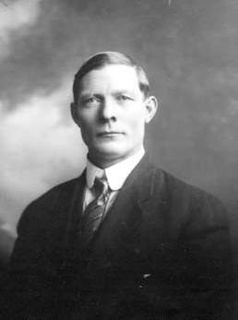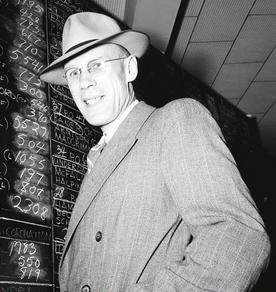This article needs additional citations for verification .(June 2018) (Learn how and when to remove this template message) |
The 1926 municipal election was held December 13, 1926, to elect a mayor and six aldermen to sit on Edmonton City Council and three trustees to sit on the public school board. Harry Carrigan, J O Pilon, and W D Trainor were acclaimed to two-year terms on the separate school board.

The Edmonton City Council is the governing body of the City of Edmonton, Alberta, Canada.
Contents
- Voter turnout
- Results
- Mayor
- Aldermen
- Public school trustees
- Separate (Catholic) school trustees
- References
There were ten aldermen on city council, but four of the positions were already filled: James East, James Findlay, Frederick Keillor (SS), and A C Sloane were all elected to two-year terms in 1925 and were still in office. James McCrie Douglas (SS) had also been elected in 1925, but had resigned to run for mayor; accordingly, L S C Dineen was elected to a one-year term.

James East was a politician and labour activist in Alberta, Canada. He was for a time and the longest-serving alderman in Edmonton's history, and was a defeated candidate at the provincial and federal levels. He was also an ardent monetary reformer.

James McCrie Douglas was a politician in Alberta, Canada, a mayor of Edmonton, and a member of the House of Commons of Canada.
There were seven trustees on the public school board, but four of the positions were already filled: Ralph Bellamy, Frank Crang (SS), F S MacPherson, and Elmer Roper had all been elected to two-year terms in 1925 and were still in office. The same was true on the separate board, where R Crossland (SS), Charles Gariepy, Thomas Magee, and A J Ryan were continuing.

Elmer Ernest Roper was a politician in Alberta, Canada. He served as leader of the Alberta Co-operative Commonwealth Federation, the mayor of Edmonton, and a member of the Legislative Assembly of Alberta. He was also a candidate for the House of Commons of Canada.
Charles Edward Gariepy was a Canadian politician. He was elected to the separate Catholic school board from 1929-1937. Gariepy was elected to be North side alderman, Edmonton City Council, Alberta, Canada 1940-1948.
The election was conducted using the single transferable vote system.
The single transferable vote (STV) is a voting system designed to achieve proportional representation through ranked voting in multi-seat organizations or constituencies. Under STV, an elector (voter) has a single vote that is initially allocated to their most preferred candidate. Votes are totalled and a quota derived. If their candidate achieves quota, he/she is elected and in some STV systems any surplus vote is transferred to other candidates in proportion to the voters' stated preferences. If more candidates than seats remain, the bottom candidate is eliminated with his/her votes being transferred to other candidates as determined by the voters' stated preferences. These elections and eliminations, and vote transfers if applicable, continue until there are only as many candidates as there are unfilled seats. The specific method of transferring votes varies in different systems.

